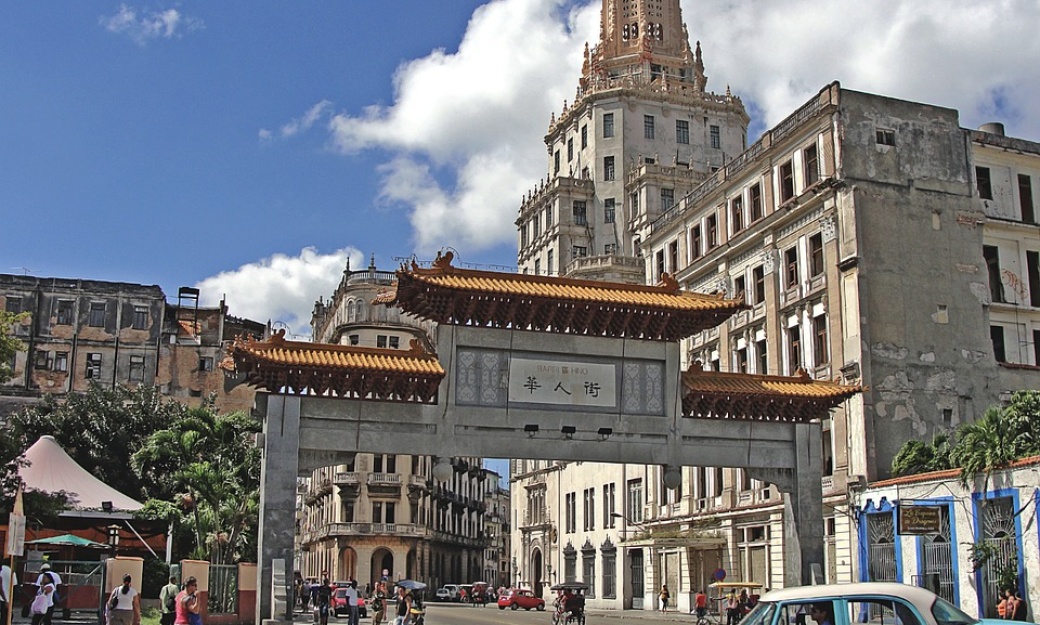Is Latin America’s China Boom Even Bigger than Africa’s?

When Europeans began arriving in the New World at the end of the 15th century, they used the region to source silver, gold, coffee, and wool. Today, China is the foremost trading partner with several Latin American countries, and buys oil from Venezuela, Mexico, and Ecuador; iron ore from Brazil; beef from Argentina; and copper from Chile and Peru.
According to a new book, The China Triangle: Latin America's China Boom and the Fate of the Washington Consensus, by Boston University global development professor Kevin P. Gallagher, Chinese investment in Latin America is outpacing even its famed liaison with Africa.
 According to Gallagher, between 2003 and 2011, China extended $80 billion in finance to Latin American countries, compared with $53 billion to African ones. During that time, Latin American GDPs grew steadily, averaging 3.6 percent, largely due to a rise in Chinese consumption of Latin American commodities. He argues that Latin America’s engagement with China is largely if not primarily responsible for the region’s progress, economically and otherwise, over the period. In 2011, China became South America’s foremost trading partner, eclipsing the United States and Europe.
According to Gallagher, between 2003 and 2011, China extended $80 billion in finance to Latin American countries, compared with $53 billion to African ones. During that time, Latin American GDPs grew steadily, averaging 3.6 percent, largely due to a rise in Chinese consumption of Latin American commodities. He argues that Latin America’s engagement with China is largely if not primarily responsible for the region’s progress, economically and otherwise, over the period. In 2011, China became South America’s foremost trading partner, eclipsing the United States and Europe.
Gallagher views this as a failure by the U.S. as much as it is a success by China. He argues that the Washington Consensus—by which the U.S. pressured Latin American countries to open their markets to free trade and deregulation during the 1990s—failed to help those states develop. “While the United States wasn’t paying attention, Latin America quickly became of the utmost strategic importance for China—as a source for many of the key natural resources it needs to grow its economy and the appetites of more than a billion people,” he writes.
But therein lies the hitch in Gallagher’s thesis. The antiquated notion that the U.S. and China are in a sort of dichotomous or binary economic arms race—a sense highlighted by the “triangle” reference upon which his book is titled—overlooks the fact that these two nations cannot possibly account for all of Latin America’s gains and losses during the two decades that he studies. If Gallagher’s strongest argument is that China’s Latin American presence is surprisingly large, his weakest is that it is almost singularly responsible for the region’s recent growth.
Those new to the topic of China’s reemergence into the world as a global financier will find The China Triangle a pertinent starting point. Gallagher begins by dutifully describing the Chinese way of doing business—and the business is massive in scope. China loaned Latin American countries more money in 2014 than the World Bank, the Inter-American Development Bank, and the Export-Import Bank of the United States—combined. Half of those loans are what’s called unique lending instruments, which means they are backed by commodities—“Latin American governments ship hundreds of thousands of barrels of oil to China to partly repay the loans.”
There are downsides to commodity booms. They cause a nation’s currency to increase in value, making wages rise, and thus it becomes cheaper for its citizenry to consume foreign goods relative to domestically produced ones. This in turn increases reliance on key resource commodities while preventing other sectors from flourishing. It’s the famous “resource curse.”
That curse became visible with the recent plummet in the global price of oil. The extent to which China will renegotiate the terms of its agreements with oil-dependent Latin American governments like Venezuela’s remains to be seen.
Gallagher and two co-authors released a study last month in which they concluded that “the prospect of Venezuelan default on Chinese loans is real.” And yet, in contrast to reports that Chinese firms are pulling back some of their investments in Africa and other parts of the world, in Latin America they seem to be doing the opposite. New Chinese finance to Latin America increased last year, to $29 billion, making 2015 the second-highest year on record for Chinese investment in the region.
In Latin America, China is forging determinedly ahead. In January 2015, Chinese President Xi Jinping promised to boost trade with the region to $500 billion and total investment to $250 billion in the next 10 years.
But China is by no means Latin America’s only suitor. The European Investment Bank and private European corporations are investing billions of dollars annually in the region. Japan was, until recently, the region’s second largest trading partner, after the U.S. And as recently as 2012, the U.S. and the Netherlands each invested more in Latin America than China did. Only in passing does Gallagher note that just 15 percent of Latin American exports go to China and that only 10 percent of China’s oil is sourced there.
Reading Gallagher’s account of China’s role in the recent Latin American economic boom, one is left wanting for evidence. “Without China, Latin America would have had a very lackluster export performance in the early twenty-first century,” Gallagher claims, but also acknowledges that “Latin America had one of the lesser China Booms in the world.” According to his numbers, South Asia’s GDP grew by 7.1 percent during the China Boom, the sub-Saharan region by 5.2 percent, and Latin America’s only grew by 3.6 percent. In fact, the Word Bank concluded that Latin America’s growth during the period was largely on par with the global average.
But let’s say for the sake of argument that Chinese investment did aid Latin America’s growth substantially. Was it a boom-and-bust? Did it translate into tangible gains for the region’s masses? Gallagher points out that according to the Gini Index, inequality in Latin America improved during the China Boom as much as it worsened during the period of the Washington Consensus. How much of it can be attributed to China, and how much to domestic programs like conditional cash transfers, which even Gallagher credits with helping to alleviate poverty in countries like Brazil and Mexico? I’m left scratching my head as to what China had to do with such methods.
Meanwhile, Gallagher uses a 2011 World Bank report to estimate that environmental degradation during Latin America’s China Boom was so severe that it translated into financial losses in the range of 8.6 percent GDP growth. Because the vast majority of Chinese investment in the region occurs in environmentally destructive sectors like energy and mining, China receives much negative attention for its activities there. And yet, Gallagher points out that many Chinese corporations adhere even more strictly to local environmental regulations than their Western counterparts. Ultimately, what good China affects in Latin America will depend less on the decisions of the former and more on the readiness of the latter to reinvest earnings wisely in infrastructure, innovation, and protection of the environment.
Anyway, the China Boom may be on its way to becoming the China Bust. According to a policy paper by Tsinghua University associate professor Matt Ferchen, China had gone through a major hunger for commodities that was unique and is unlikely to continue. “The elephant in the room,” he writes, is “what happens if and when the China-driven commodity boom ends or becomes prone to increased volatility?” If China’s recent economic slowdown continues as predicted, we may not have to wait long for an answer.
In the late 1800s, Chinese workers were imported by the hundreds to build the Panama Canal. But “rather than coming to the Americas as laborers on such projects,” writes Gallagher, “the Chinese are now the bankers that are financing them.” The Chinese might not be the financers forever, but many have lived in Latin America for generations. Yet what’s still missing from the China-in-Latin-America literature is an intimate portrait of the Chinese men and women who have called the region their home, and of the Latin Americans with whom they interact. Howard French’s China’s Second Continent achieves this for Africa. But the faces of the Chinese-Latin American relationship remain unknown. Now that Gallagher has penned the economic history of China’s rise in Latin America, what’s next is to learn about the individuals who are driving it.
Jacob Kushner is the author of China's Congo Plan: What the Economic Superpower Sees in the World's Poorest Nation.

